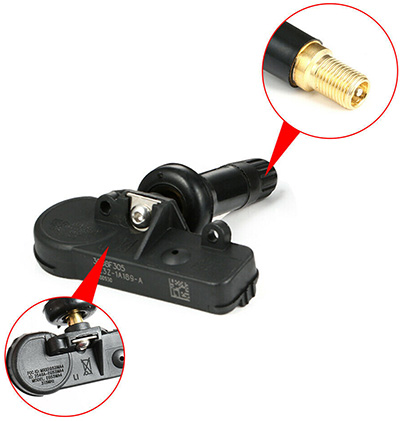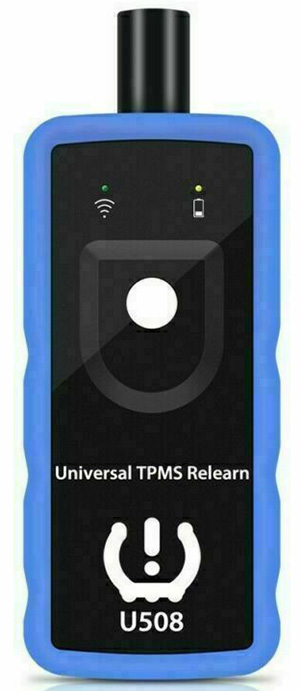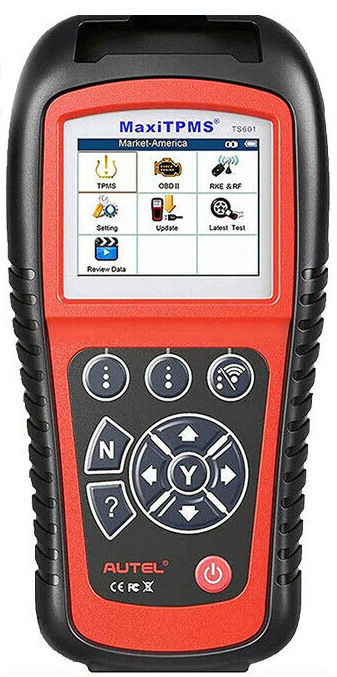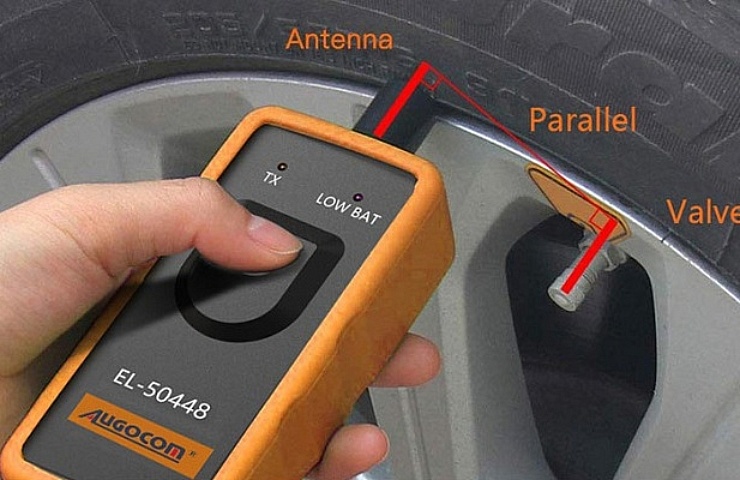When spring arrives, it’s time for the yearly ritual of swapping out winter tires for summer treads. But the task can quickly get complicated when cars have a tire pressure monitoring system (TPMS). Here’s what you need to know.
Shop now for TPMS toolsTPMS History

A direct TPMS sensor is incorporated into the tire valve.
Since 2008, the federal government has required all new cars to come with a tire pressure monitoring system. The device is designed to warn you if a tire is seriously under-inflated. It also helps you maintain correct tire pressure for better fuel economy.
To comply with the rule, carmakers use two different types of TPMS systems, as follows.
Direct monitoring: Most American cars use a direct system, in which a sensor is placed in the tire valve. The device sends a signal to the dashboard when the pressure is low.
Indirect monitoring: Import vehicles commonly use an indirect TPMS method. That process places sensors on the wheel to calculate rotation and speed. Since an under-inflated tire is smaller, the distance traveled for one rotation can be detected. When that happens, the warning is communicated to the dashboard.
As TPMS devices evolved over the years, they were able to show current pressures for each tire on a dashboard display. When you swap your tires (or rotate them), the TPMS system needs to “relearn” where the devices are and how they communicate. That’s why you need a TPMS relearn tool.
Help the TPMS Relearn
Depending on your car model, the process of resetting your TPMS can be super easy or extremely tough.
The first step after installing new tires is to inflate them to the correct pressure. Typically, a sticker on the driver’s side door panel will indicate the correct pressure setting (in psi). Use a tire pressure gauge to confirm that you filled up the tires to that indicated pressure.
If you’re lucky to own a car with an easy system, just push the reset button under the steering column (or in the menu system). It’s best to press that button when the vehicle is stationary with the ignition off. Afterward, as you begin to drive, the TPMS will do its calculations and recalibrate the setting based on the new pressure.
Shop now for tire pressure gaugesSome models will require using menu settings on the dashboard to initiate the reset process. Your key fob might also work. Consult with the owner’s manual for details.
Use a TPMS Relearn Tool

A TPMS relearning tool can be handy after a tire swap.
Regardless of the vehicle type, a TPMS relearn tool can help teach the car about the proper tire pressure, tire locations, and identification numbers. A TPMS relearn is essential if you replaced the valve sensor.
The TPMS relearn tool does its job when placed adjacent to each tire valve. But some of them start the process by connecting to the onboard diagnostic (OBD) port. The videos (below) demonstrate the process.
Here’s an important warning: Not all TPMS relearn tools work on all cars. Before making a purchase, double-check that the device works on your specific year, make, and model. Unfortunately, if you own vehicles of different makes, you may need to buy more than one device.
Shop now for TPMS relearn toolsTPMS Programming

Programmable, multi-application TPMS sensors are more flexible because the same sensor can be used for many different vehicles. Many shops sell programmable tire sensors so they can stock only a few sensors that cover most vehicles—instead of hundreds of vehicle-specific sensors.
You might also prefer a programmable sensor as well. For example, if you want a set of snow tires to be used different vehicles, a programmable sensor means the tire with its TPMS can be swapped.
TPMS programing devices are usually more expensive. That’s because they employ technology to read the sensor ID number, battery level, tire pressure, and tire temperature. Some of them offer the ability to clone the settings from one TPMS to another.
Here our two helpful videos that demonstrate how the relearning process works for GM vehicles:





